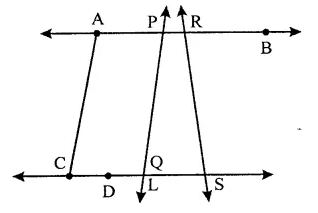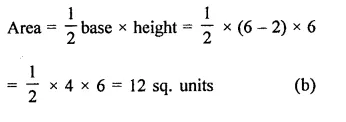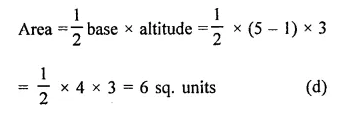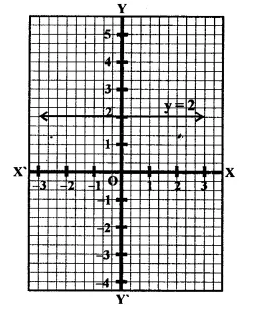RD Sharma Class 9 Solutions Chapter 9 Triangle and its Angles VSAQS
These Solutions are part of RD Sharma Class 9 Solutions. Here we have given RD Sharma Class 9 Solutions Chapter 9 Triangle and its Angles VSAQS
Other Exercises
- RD Sharma Class 9 Solutions Chapter 9 Triangle and its Angles Ex 9.1
- RD Sharma Class 9 Solutions Chapter 9 Triangle and its Angles VSAQS
Question 1.
How many least number of distinct points determine a unique line?
Solution:
At least two distinct points determine a unique line.
Question 2.
How many lines can be drawn through both of the given points?
Solution:
Through two given points, one line can be drawn.
Question 3.
How many lines can be drawn through a given point?
Solution:
Through a given point, infinitely many lines can be drawn.
Question 4.
in how many points two distinct lines can intersect?
Solution:
Two distinct lines can intersect at the most one point.
Question 5.
In how many points a line, not in a plane, can intersect the plane?
Solution:
A line not in a plane, can intersect the plane at one point.
Question 6.
In how many points two distinct planes can intersect?
Solution:
Two distinct planes can intersect each other at infinite number of points.
Question 7.
In how many lines two distinct planes can intersect?
Solution:
Two distinct planes intersect each other in one line.
Question 8.
How many least number of distinct points determine a unique plane?
Solution:
Three non-collinear points can determine a unique plane.
Question 9.
Given three distinct points in a plane, how many lines can be drawn by joining them?
Solution:
Through three given points, one line can be drawn of they are collinear and three if they are non-collinear.
Question 10.
How many planes can be made to pass through a line and a point not on the line?
Solution:
Only one plane can be made to pass through a line and a point not on the line.
Question 11.
How many planes can be made to pass through two points?
Solution:
Infinite number of planes can be made to pass through two points.
Question 12.
How many planes can be made to pass through three distinct points?
Solution:
Infinite number of planes can be made of they are collinear and only one plane, if they are non-collinear.
Hope given RD Sharma Class 9 Solutions Chapter 9 Triangle and its Angles VSAQS are helpful to complete your math homework.
If you have any doubts, please comment below. Learn Insta try to provide online math tutoring for you.





